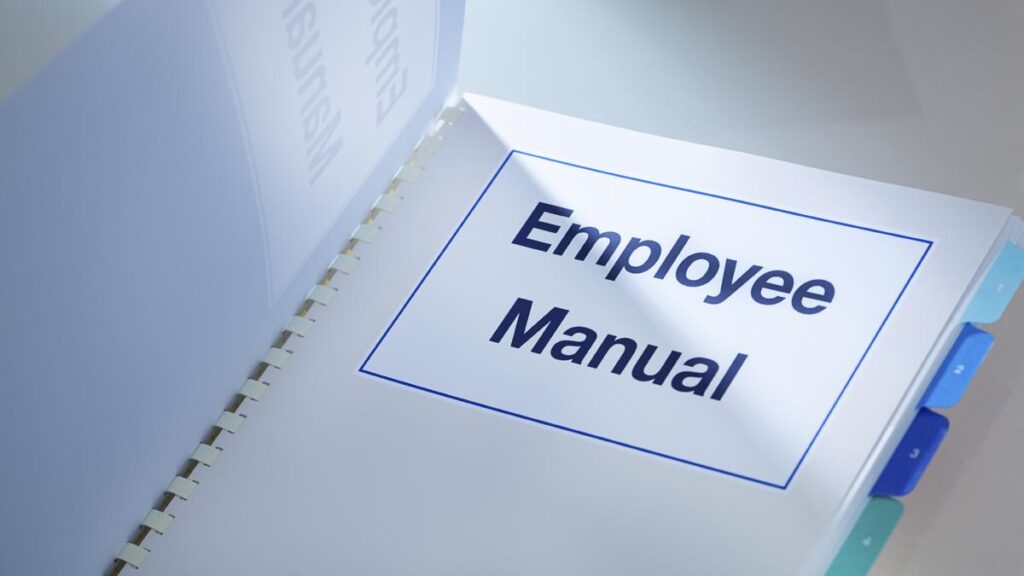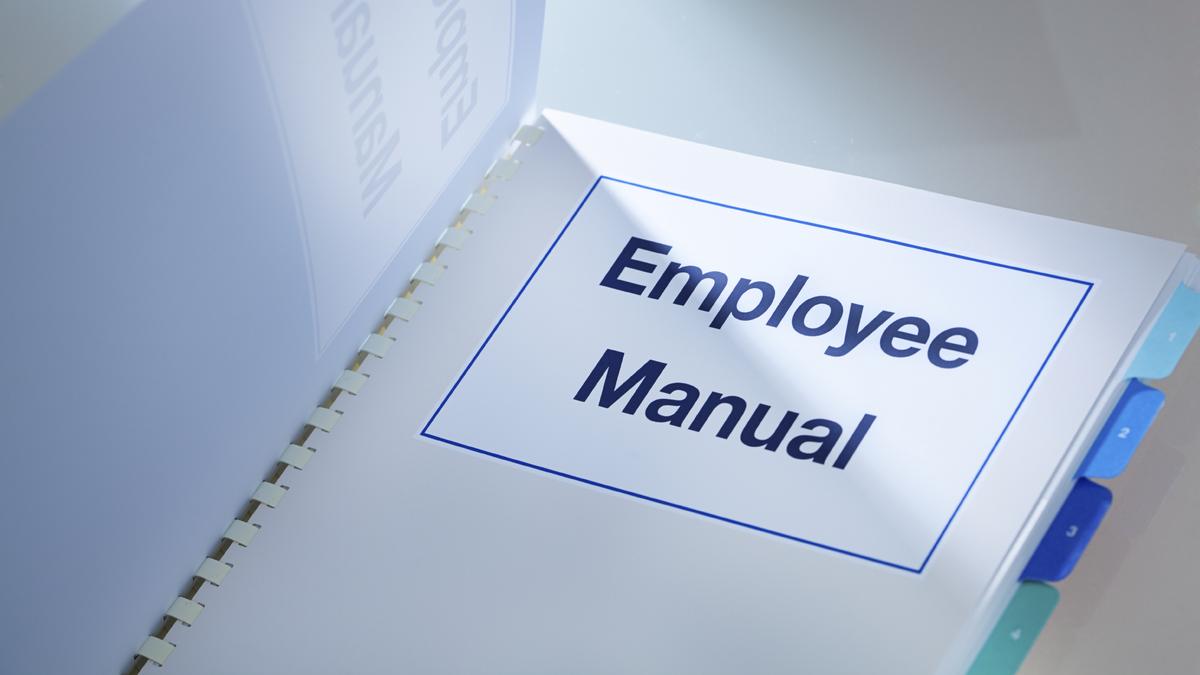
Crafting Clarity: Mastering the Employee Manual Format for Optimal Impact
The employee manual is the cornerstone of organizational communication, setting the tone for workplace culture, outlining expectations, and ensuring legal compliance. A well-crafted employee manual format isn’t just a collection of policies; it’s a strategic document that fosters understanding, minimizes risk, and empowers employees. In today’s dynamic business environment, having a clear, concise, and accessible employee manual format is more critical than ever. This article delves into the essential components of an effective employee manual format, providing practical guidance on how to create a resource that benefits both your employees and your organization.
Why the Right Employee Manual Format Matters
A poorly designed employee manual format can lead to confusion, misinterpretations, and even legal challenges. Imagine a scenario where a new hire misinterprets the company’s policy on remote work due to ambiguous language in the manual. This could result in decreased productivity, strained relationships, and potential disciplinary action. Conversely, a well-structured employee manual format ensures that every employee is on the same page, promoting a consistent and fair work environment.
Beyond clarity, the employee manual format also impacts employee engagement. A visually appealing and easy-to-navigate manual demonstrates that the company values its employees’ time and understanding. It signals a commitment to transparency and open communication, which are key drivers of employee satisfaction and retention. The employee manual format is not merely a compliance document; it is a reflection of your company’s values and culture.
Essential Components of an Effective Employee Manual Format
Building a robust employee manual format requires careful planning and attention to detail. Here are the essential components to consider:
Introduction and Welcome Message
The introduction sets the stage for the entire manual. It should include a welcome message from the CEO or a senior leader, expressing the company’s values and commitment to its employees. This section should also briefly explain the purpose of the manual and how employees can use it as a resource.
Company Overview and Mission Statement
Provide a brief overview of the company’s history, mission, and values. This helps employees understand the organization’s purpose and how their roles contribute to the overall goals. Clearly defining the company’s mission in the employee manual format helps to align everyone.
Code of Conduct and Ethics
This section outlines the company’s expectations for employee behavior, including ethical standards, professionalism, and compliance with laws and regulations. It should cover topics such as conflicts of interest, confidentiality, and anti-harassment policies. A strong code of conduct is a crucial part of the employee manual format.
Employment Policies
This is the heart of the employee manual format, covering a wide range of policies related to employment. Some key areas to include are:
- Equal Employment Opportunity (EEO): A statement affirming the company’s commitment to non-discrimination and equal opportunities for all employees.
- Hiring and Promotion: Policies outlining the procedures for hiring, promotion, and internal transfers.
- Compensation and Benefits: Information on pay scales, salary increases, bonuses, health insurance, retirement plans, and other benefits.
- Working Hours and Overtime: Policies regarding standard working hours, overtime pay, and timekeeping procedures.
- Leave Policies: Details on vacation time, sick leave, personal leave, and other types of leave, including family and medical leave (FMLA).
- Performance Management: Information on performance reviews, goal setting, and performance improvement plans.
- Disciplinary Action: A clear explanation of the company’s disciplinary procedures, including warnings, suspensions, and termination.
- Termination of Employment: Policies outlining the procedures for voluntary and involuntary termination of employment.
Workplace Policies
These policies address issues related to the workplace environment and employee conduct. Examples include:
- Safety and Security: Policies on workplace safety, emergency procedures, and security protocols.
- Technology Use: Guidelines on the use of company computers, internet, email, and social media.
- Dress Code: Expectations for employee attire and appearance.
- Drug and Alcohol Policy: Policies on drug and alcohol use in the workplace.
- Harassment and Discrimination: Policies prohibiting harassment and discrimination based on protected characteristics.
- Conflict Resolution: Procedures for resolving workplace conflicts and grievances.
Employee Benefits and Resources
This section provides detailed information on the benefits and resources available to employees, such as health insurance, retirement plans, employee assistance programs (EAPs), and training opportunities. It is important to provide contact information for relevant departments or individuals who can answer employee questions.
Acknowledgment Form
Include an acknowledgment form that employees must sign to confirm that they have received, read, and understood the employee manual format. This form should be kept in the employee’s personnel file.
Formatting Tips for Enhanced Readability
The employee manual format is not just about content; it’s also about presentation. Here are some formatting tips to enhance readability and make the manual more user-friendly:
- Use clear and concise language: Avoid jargon and legal terms that employees may not understand.
- Break up text with headings and subheadings: This makes the manual easier to scan and find specific information.
- Use bullet points and lists: These help to organize information and make it more digestible.
- Include visuals: Incorporate charts, graphs, and images to illustrate key concepts.
- Use a consistent font and layout: This creates a professional and polished look.
- Provide a table of contents and index: These help employees quickly locate the information they need.
- Make it accessible: Ensure the manual is available in both print and electronic formats.
Keeping Your Employee Manual Format Up-to-Date
An employee manual format is not a static document; it should be reviewed and updated regularly to reflect changes in laws, regulations, and company policies. Aim to review your manual at least annually, or more frequently if necessary. Communicate any updates to employees and provide them with a revised acknowledgment form to sign. Keeping the employee manual format up to date is an ongoing process. [See also: Legal Compliance in Employee Handbooks]
Leveraging Technology for a Modern Employee Manual Format
In today’s digital age, consider leveraging technology to enhance your employee manual format. An online or interactive manual can offer several advantages, such as:
- Easy access: Employees can access the manual from anywhere with an internet connection.
- Searchability: Employees can quickly find specific information using a search function.
- Multimedia content: You can incorporate videos, audio clips, and interactive elements to make the manual more engaging.
- Real-time updates: You can easily update the manual and notify employees of changes.
- Tracking and analytics: You can track employee engagement with the manual and identify areas that need improvement.
Platforms like employee portals or dedicated HR software can host your online manual and provide additional features such as policy acknowledgment tracking and employee feedback mechanisms. The employee manual format is evolving, and technology is playing a crucial role.
The Legal Importance of a Well-Defined Employee Manual Format
Beyond fostering a positive workplace culture, a well-defined employee manual format serves as a critical legal document. It helps protect the company from potential lawsuits by clearly outlining policies and procedures related to employment law. For example, a comprehensive anti-harassment policy can demonstrate the company’s commitment to preventing and addressing harassment in the workplace. Similarly, a clear termination policy can help reduce the risk of wrongful termination claims. Ensure your employee manual format is reviewed by legal counsel to ensure compliance with all applicable laws and regulations. [See also: Avoiding Legal Pitfalls in Employee Handbooks]
Examples of Effective Employee Manual Formats
While every company’s needs are unique, there are several examples of effective employee manual format that can serve as inspiration:
- The Visual Manual: Emphasizes visual elements such as infographics, illustrations, and videos to communicate key information.
- The Interactive Manual: Incorporates interactive quizzes, polls, and simulations to engage employees and test their understanding of policies.
- The Mobile-Friendly Manual: Designed specifically for mobile devices, with a responsive layout and easy navigation.
- The Culture-Focused Manual: Highlights the company’s values, mission, and culture, using storytelling and employee testimonials.
Consider your company’s culture, industry, and employee demographics when choosing an employee manual format. The goal is to create a resource that is both informative and engaging.
Conclusion: Investing in a Strong Employee Manual Format
In conclusion, the employee manual format is a vital tool for effective communication, risk management, and employee engagement. By investing in a well-designed and regularly updated manual, you can create a more informed, productive, and compliant workforce. Remember to focus on clarity, accessibility, and relevance to ensure that your manual serves as a valuable resource for both your employees and your organization. A thoughtful employee manual format is an investment in your company’s future. Taking the time to develop a comprehensive and user-friendly manual is an investment that will pay dividends in the long run, fostering a positive work environment, minimizing legal risks, and empowering employees to succeed.

